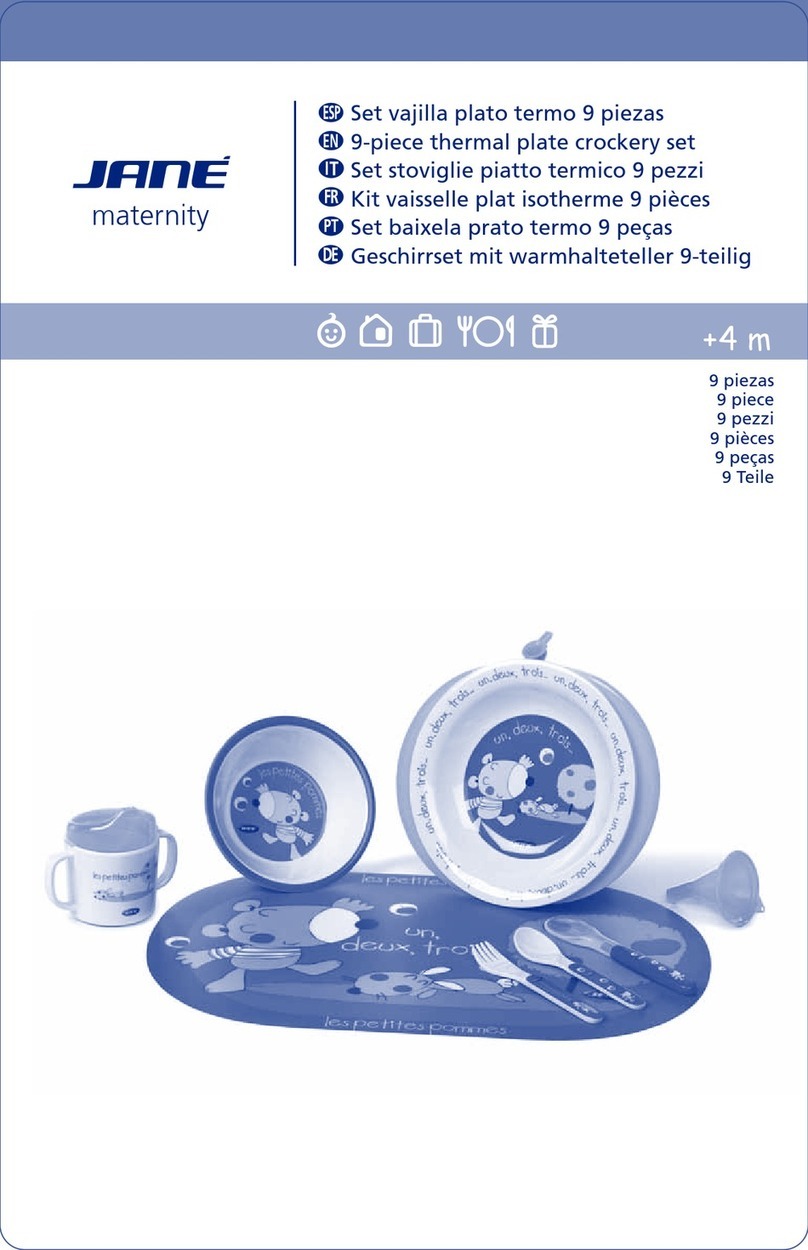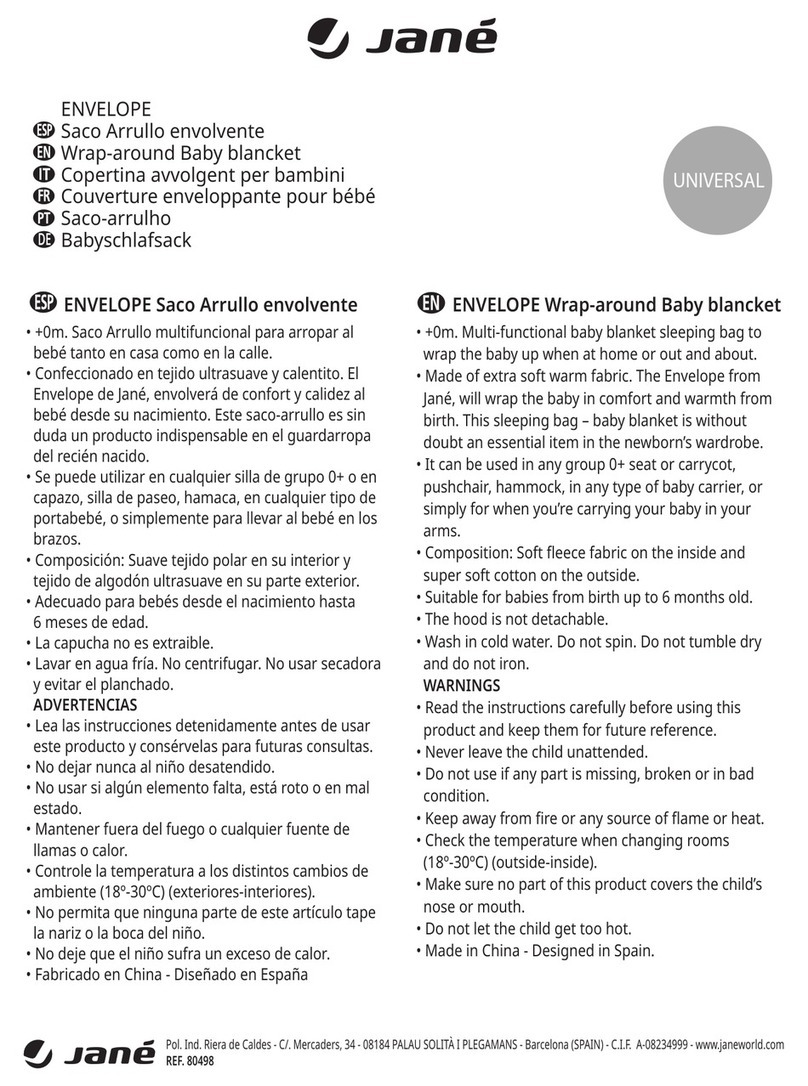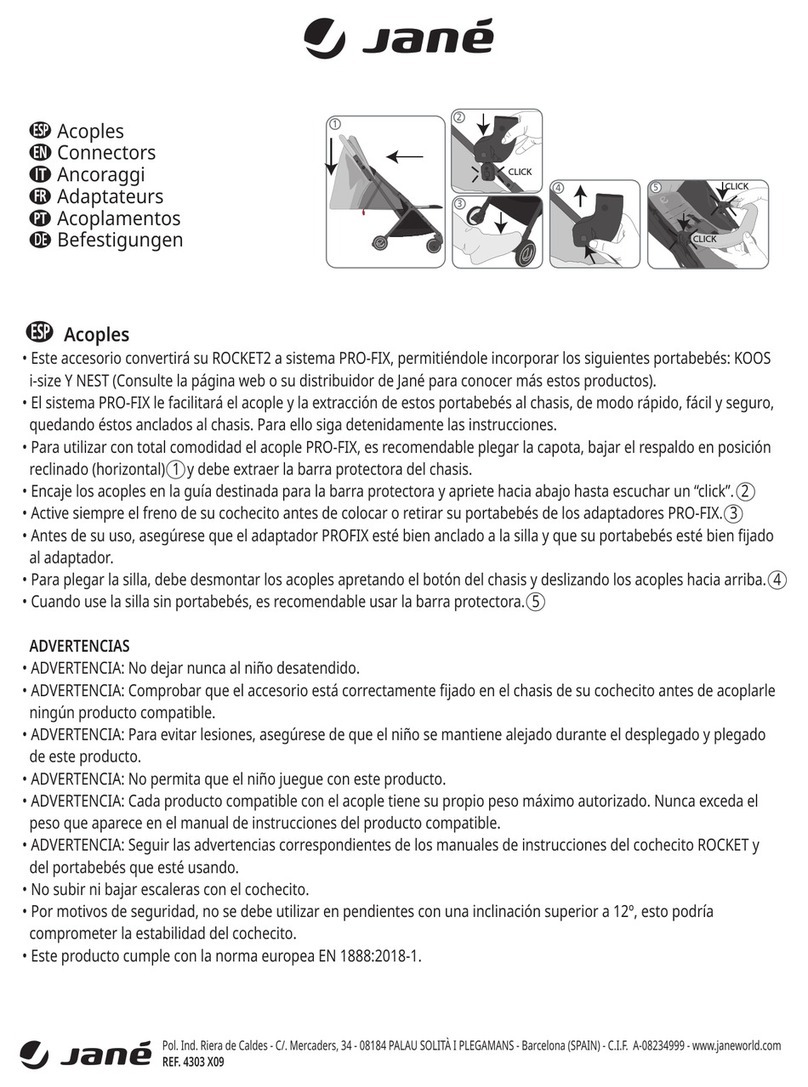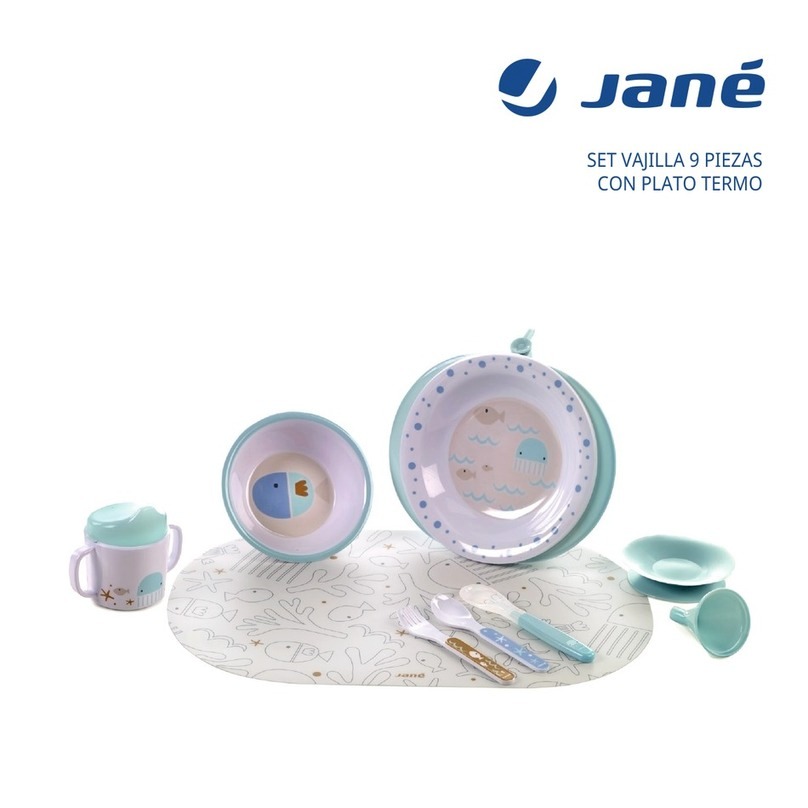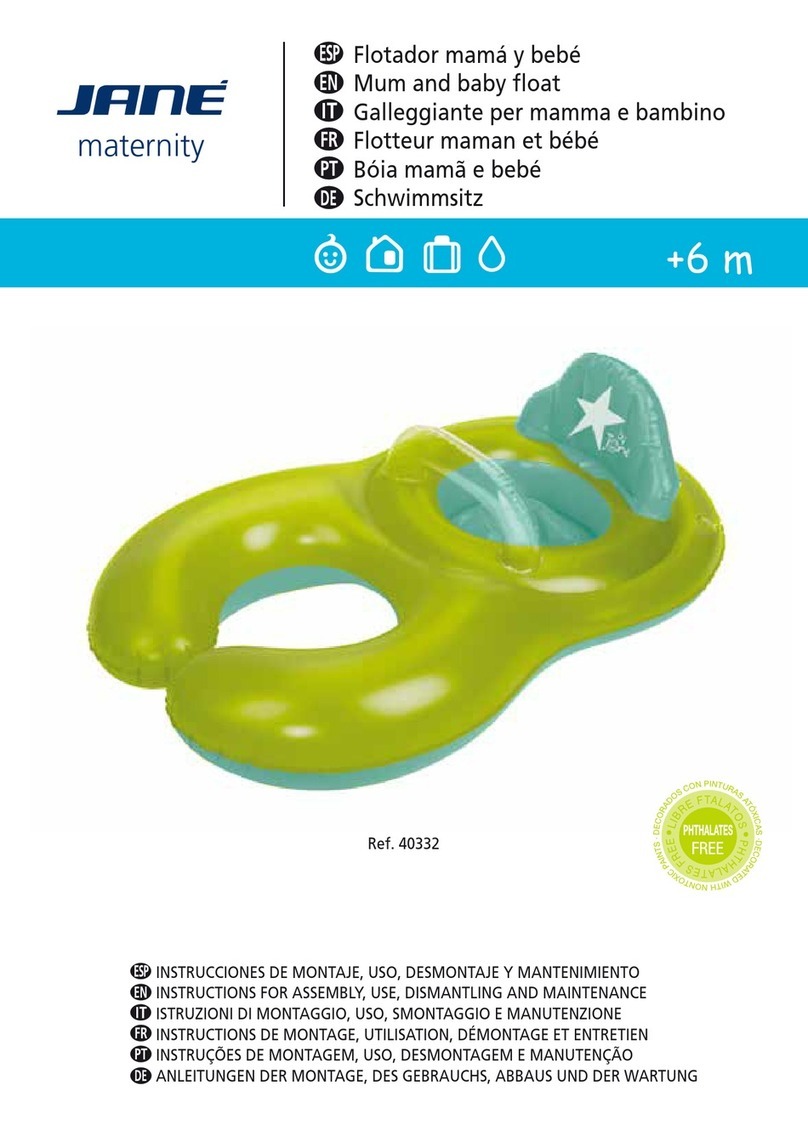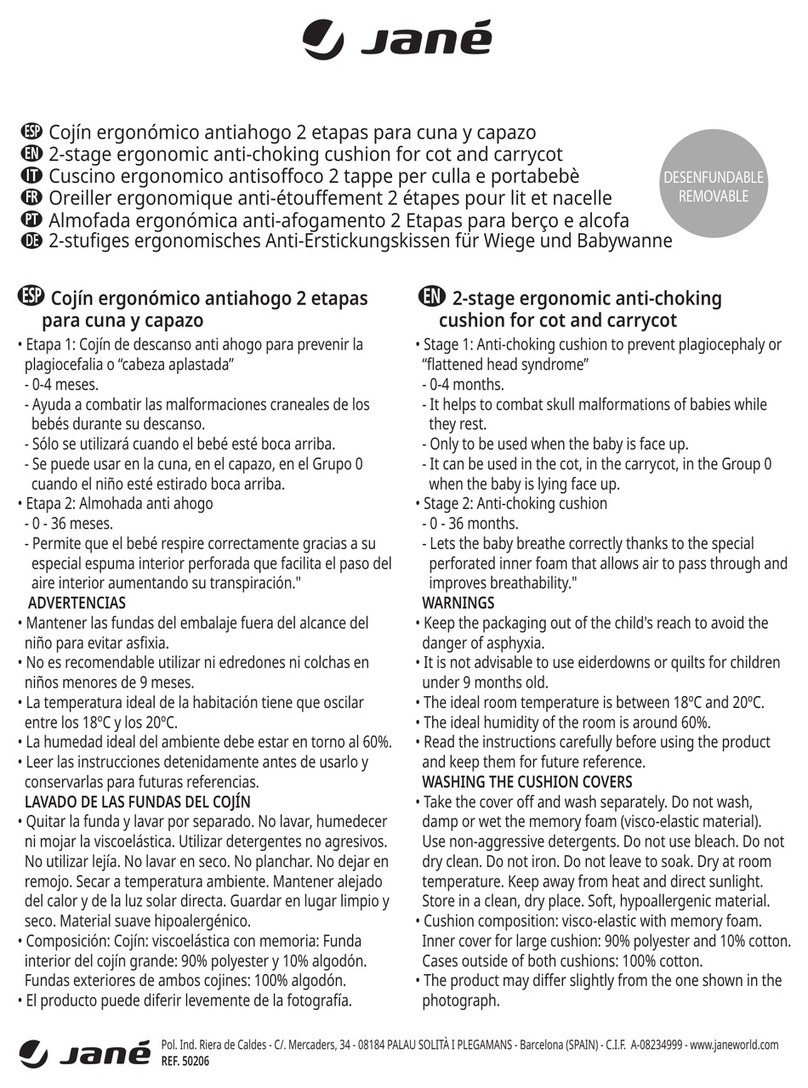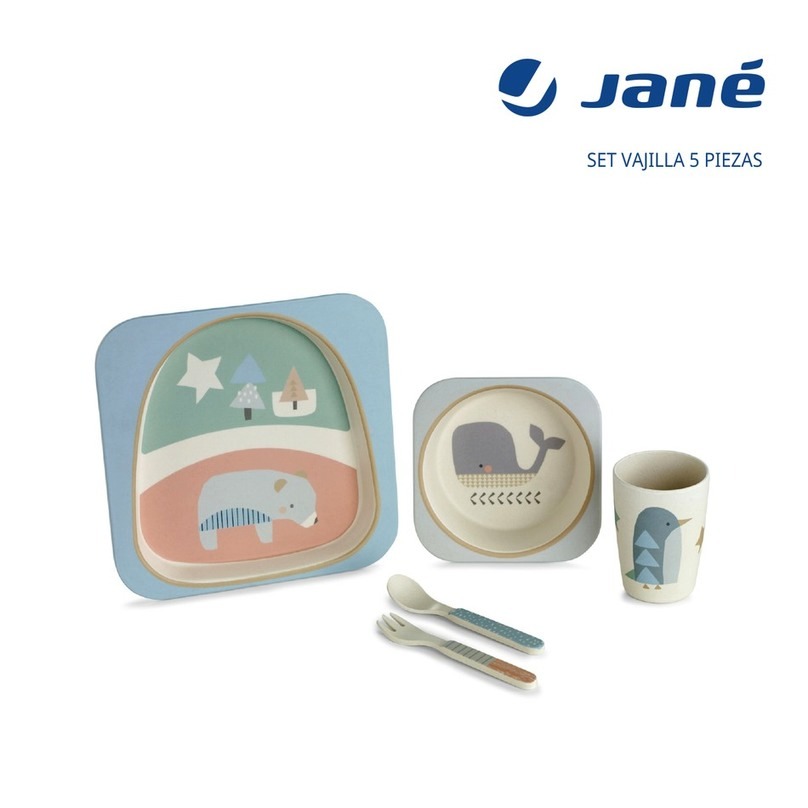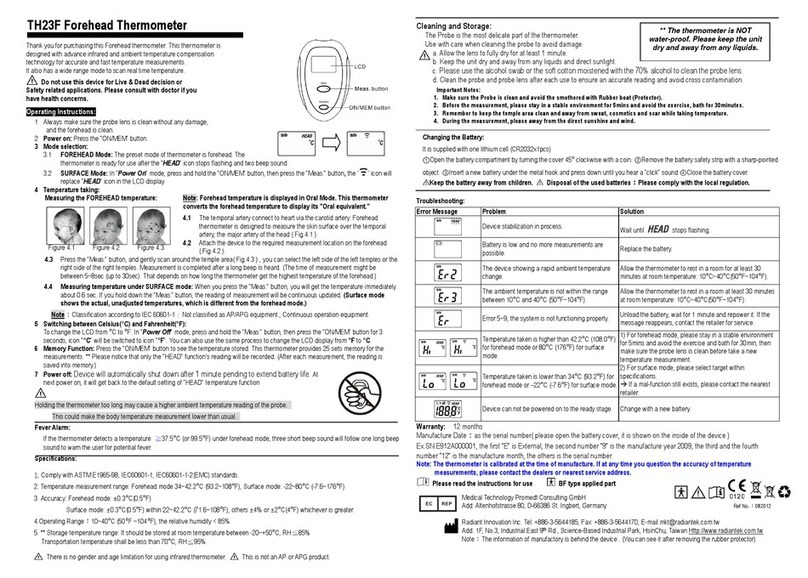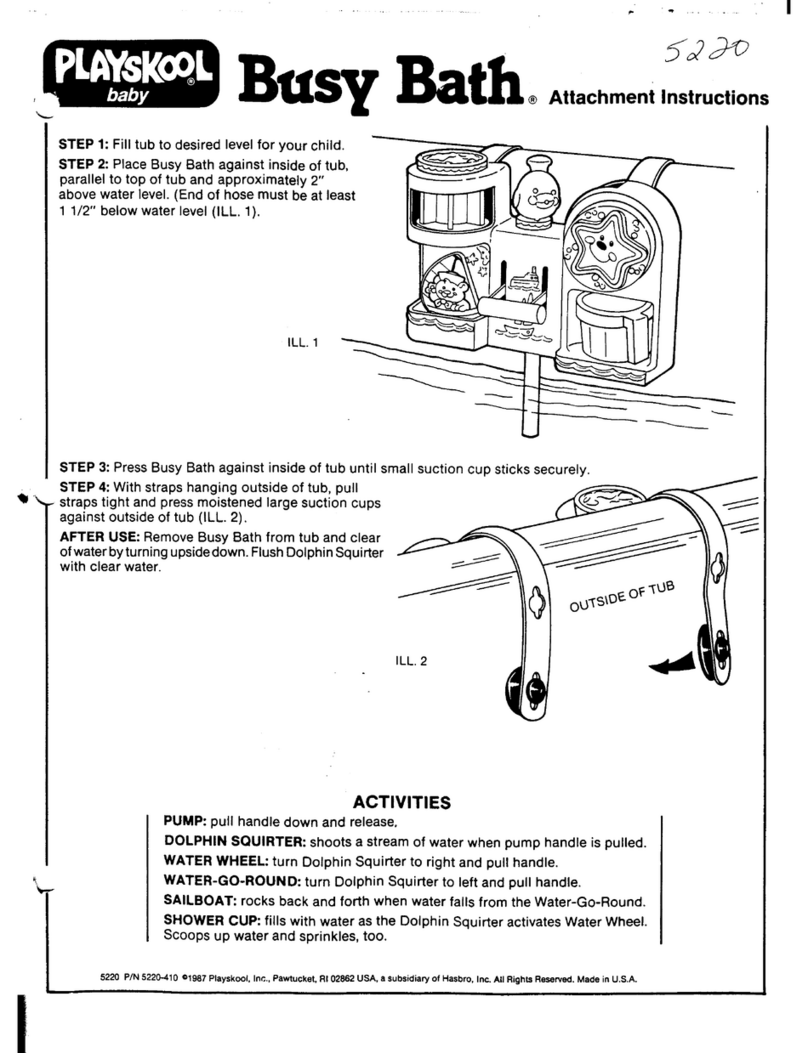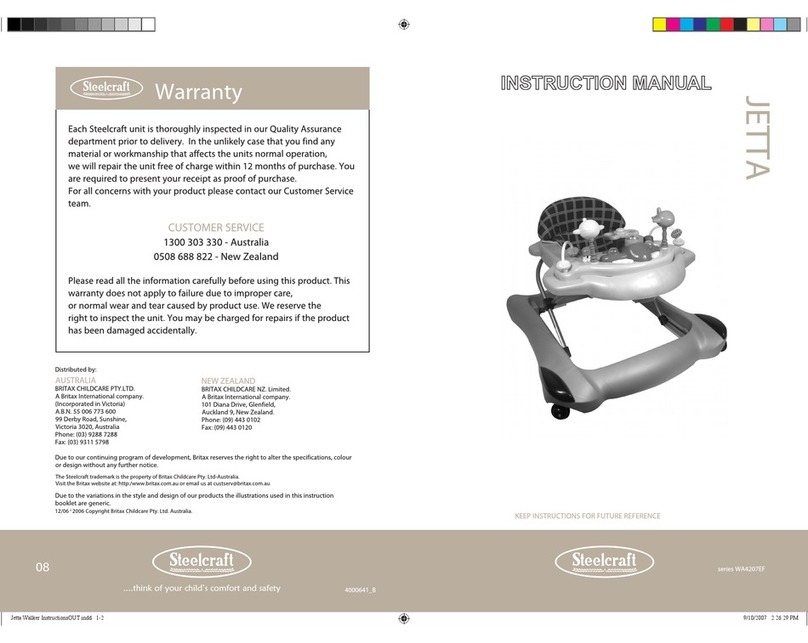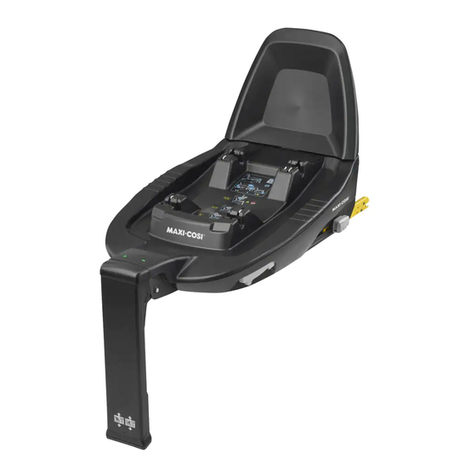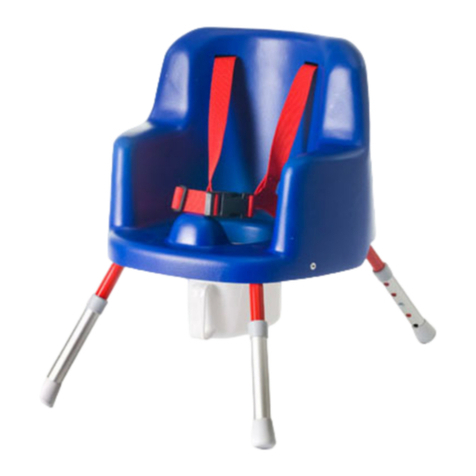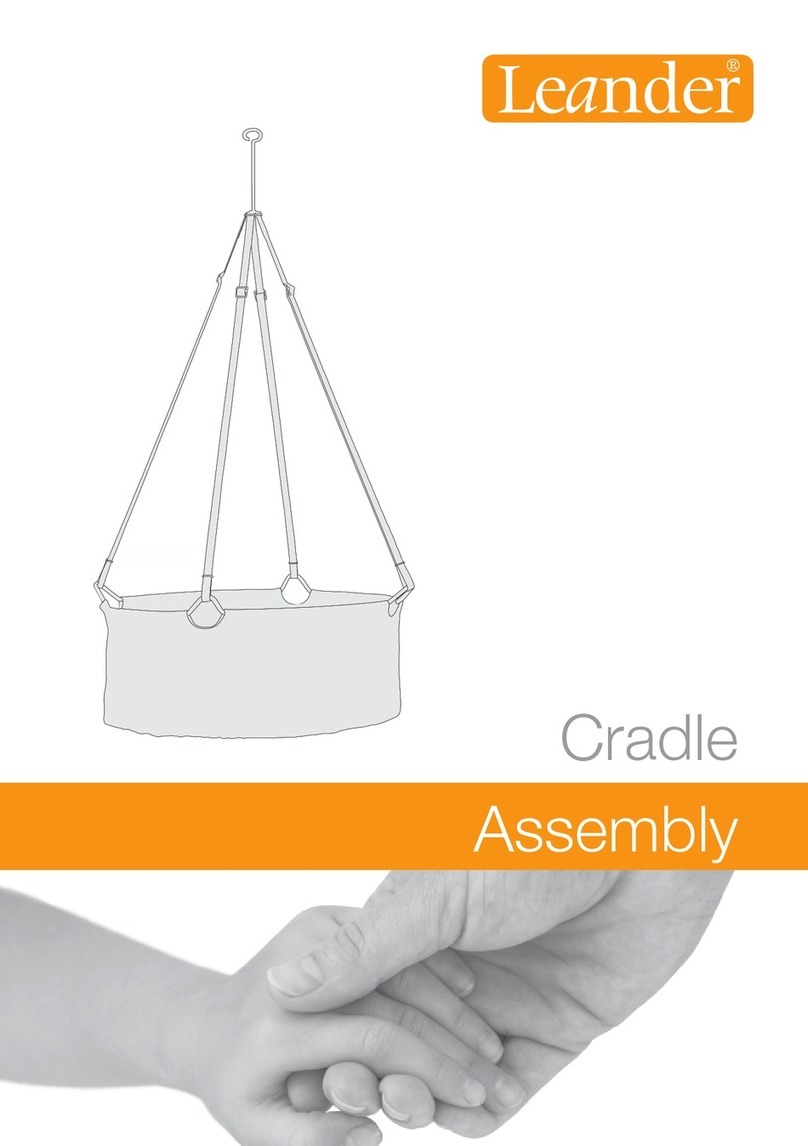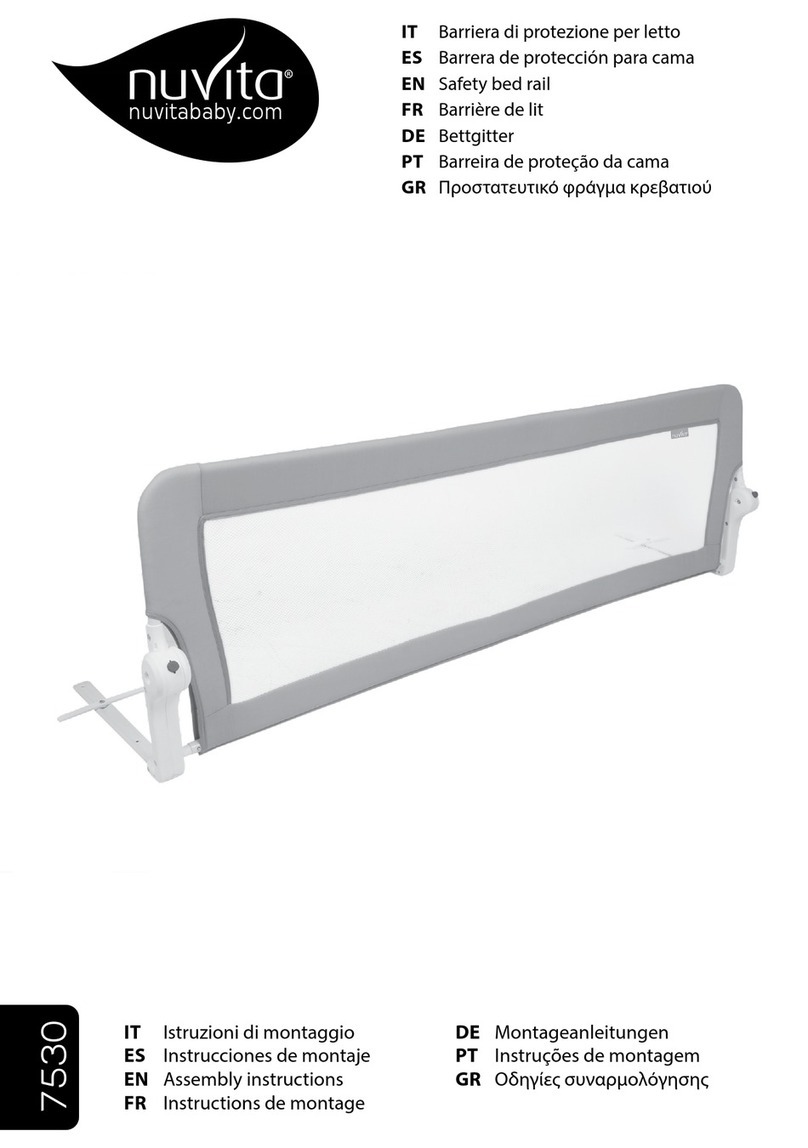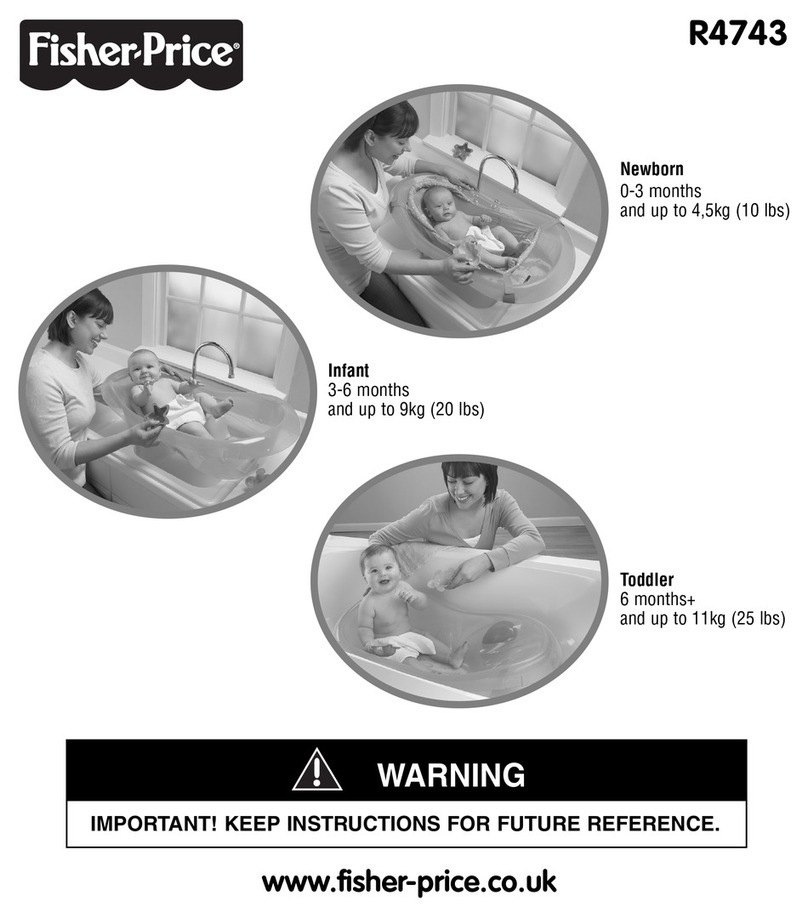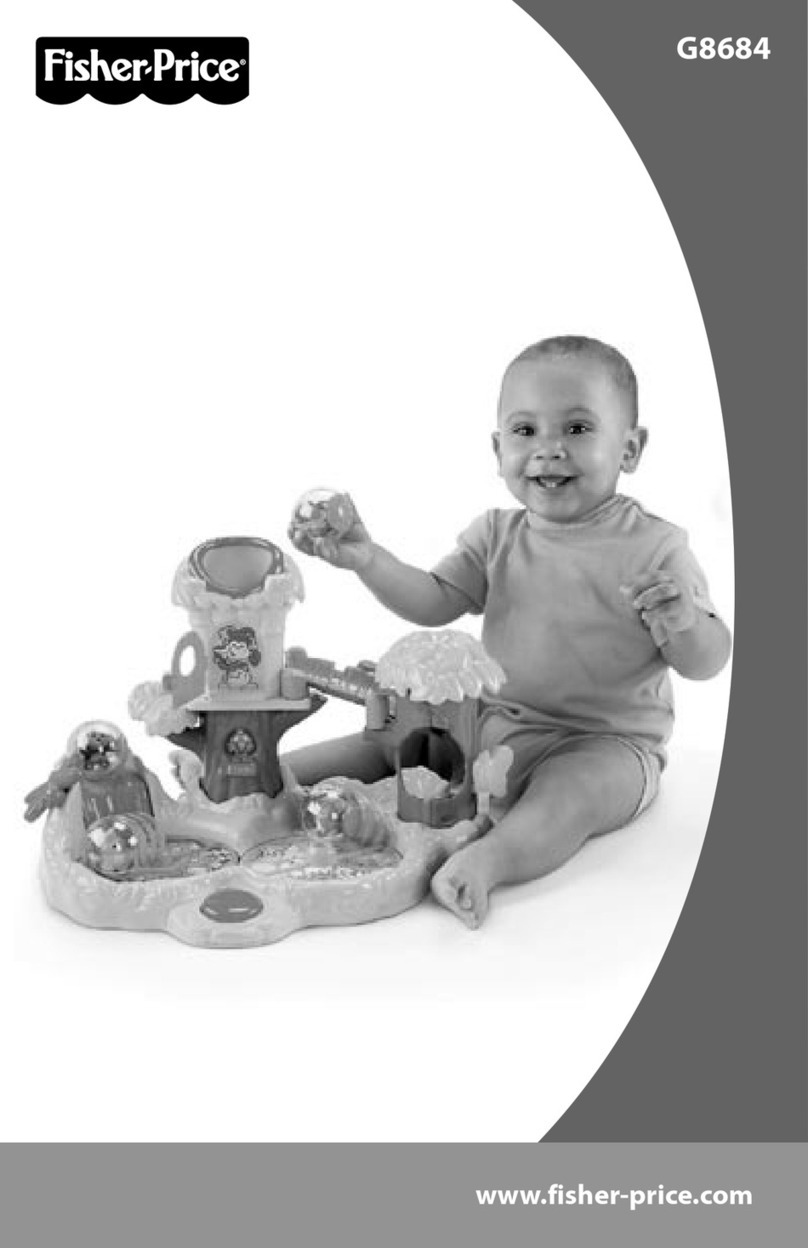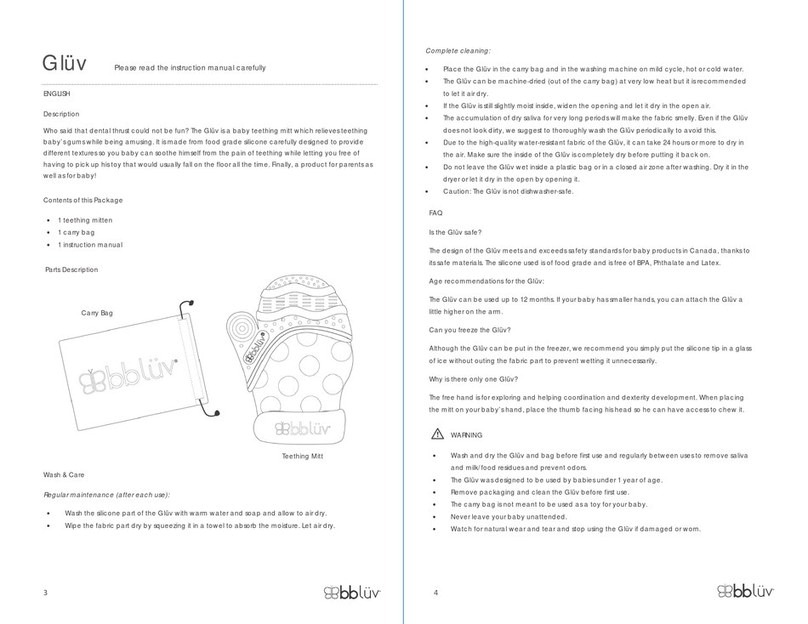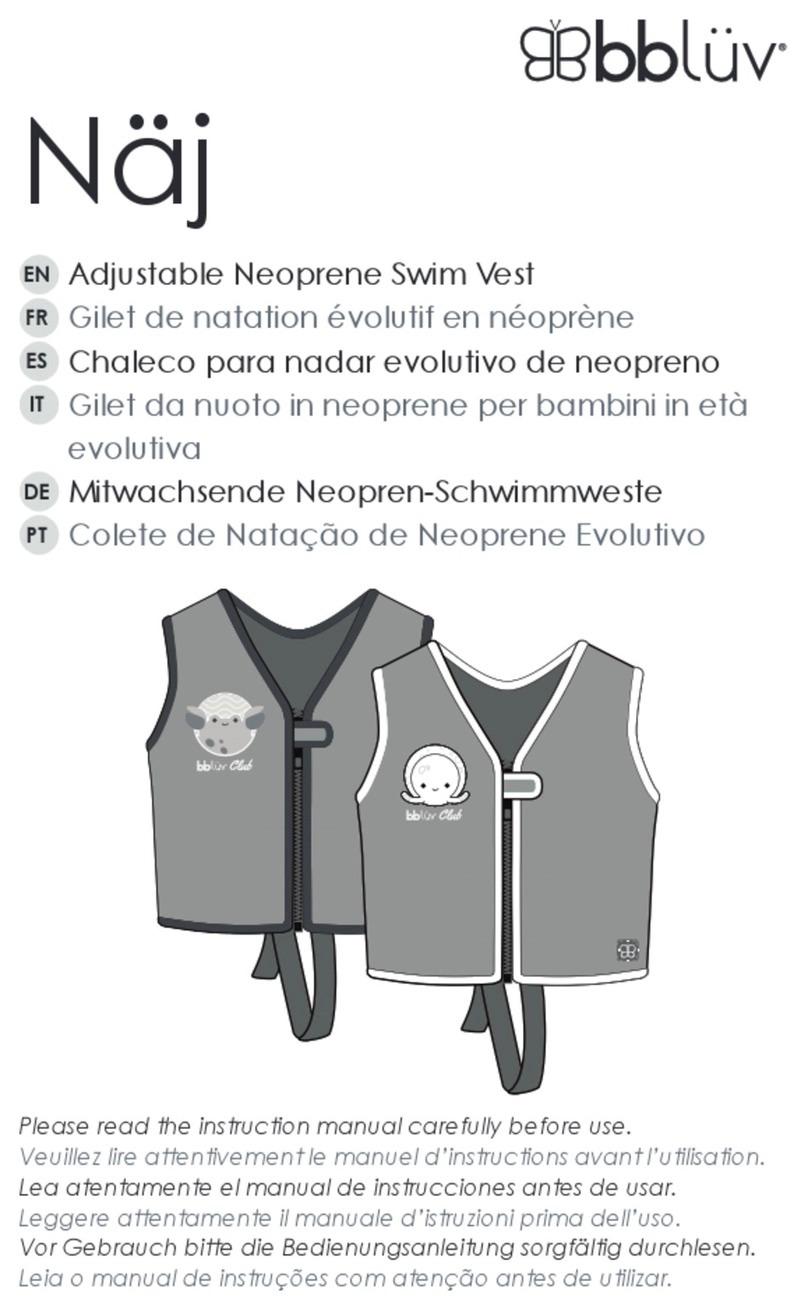
5
ISTRUZIONI DI MONTAGGIO, USO, SMONTAGGIO E MANUTENZIONE:
a) Per gonfiare il galleggiante, bisogna innanzitutto aprire il tappo della valvola. Gonfiare con il fiato o con
una pompa manuale (mai con un compressore) fino a che tutte le camere del galleggiante siano gonfie ed
abbiano una certa pressione (premendo presentino una certa resistenza).
Sapremo che il galleggiante è gonfio, quando inizia a presentare una certa resistenza mentre lo gonfiamo.
b) Una volta gonfio, chiudere rapidamente il tappo della valvola in modo tale che fuoriesca la minor
quantità di aria possibile dall'interno.
c) Una volta gonfiato correttamente il galleggiante, collocare il bambino/a nel galleggiante, assicurandosi di
collocarlo bene con le gambe nella loro corrispondente ubicazione. Una volta collocato il bambino/a nella
posizione stabile, collocare la parte aperta del galleggiante nel corpo dell'adulto, in modo tale da
circondarlo con i bracci del galleggiante, e rivolto sempre verso il bambino.
Assicurarsi che le chiusure che si trovano sulla seduta del salvagente siano ben fissate, dato che servono per
adattare le misure
del salvagente al peso del bambino.
d) Per togliersi il galleggiante, innanzitutto togliere il bambino/a e lasciarlo/a in un luogo sicuro, quindi
procedere a togliersi il galleggiante dalla cintura.
e) Per sgonfiare il galleggiante, prima deve essere ben asciutto, quindi aprire il tappo della valvola, premere
fino a che non rimanga più aria all'interno delle camere, e procedere alla sua chiusura per conservarlo.
Bisogna premere la valvola come si indica per poter svuotare l'aria dall'interno.
f) Per immagazzinare il galleggiante, deve essere ben asciutto prima di procedere alla sua chiusura.
Collocare il tappo della valvola nella sua posizione di chiusura prima di piegare il galleggiante.
g) Per un corretto utilizzo del galleggiante, il livello dell'acqua deve essere tale da permettere al bambino di
non toccare, ed assicurare all'adulto a carico di toccare il suolo senza immergersi e poter reagire davanti a
qualsiasi possibile complicazione (ribaltamento, perdita di pressione, ecc.). Si raccomanda di utilizzare il
galleggiante con un livello d'acqua che arrivi all'altezza del petto dell'adulto.
AVVERTENZA: Non lasciare mai il bambino incustodito.
L'uso di pannolini o di un qualunque capo d'abbigliamento non deve causare l'imprigionamento del bambino
all'interno della seduta.
Non protegge dall'annegamento.
Gonfiare sempre completamente tutte le camere d'aria.
Usare solo sotto la supervisione costante, a diretta portata di mano del salvagente con seduta.
ATTENZIONE - RISCHIO DI CAPOVOLGIMENTO
Se il bambino è al di sopra o al di sotto dell'intervallo stabilito per peso/età.
A una profondità in cui il bambino possa toccare il fondo con i piedi, con onde frangenti o in pozze
d'acqua naturali.
Fabbricato in Cina - Progettato in Spagna.
NON UTILIZZARE
GALLEGGIANTE PER MAMMA E BAMBINO
Attrezzatura di galleggiamento per l'apprendimento del nuoto CLASSE A con livello
di RENDIMENTO 1
Non è un giocattolo acquatico.
La fascia di età-peso in cui il bambino è vulnerabile è: da 6 a 36 mesi e da 6 a 18 kg.
Rispetta la normativa europea EN 13138-3.
